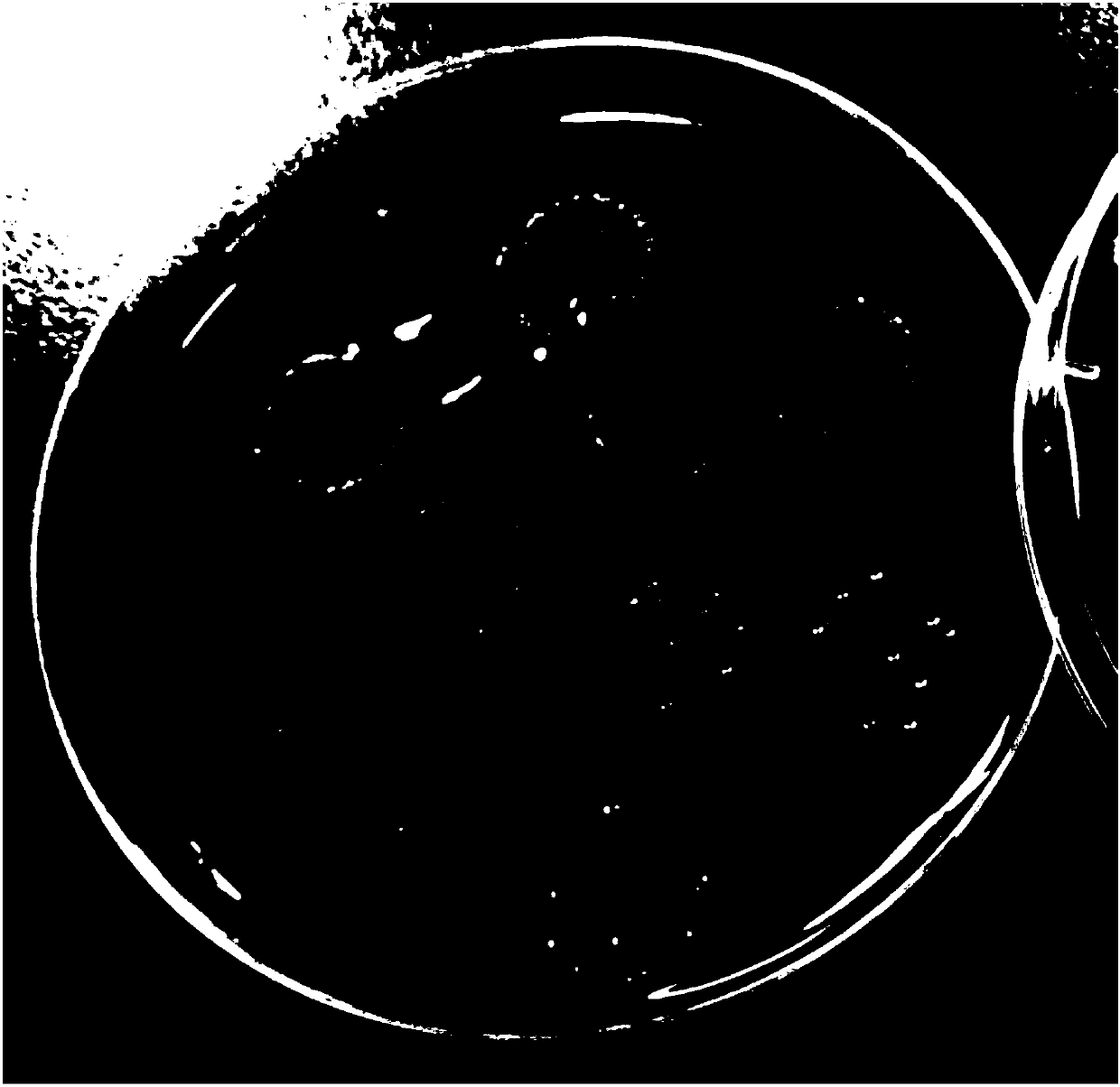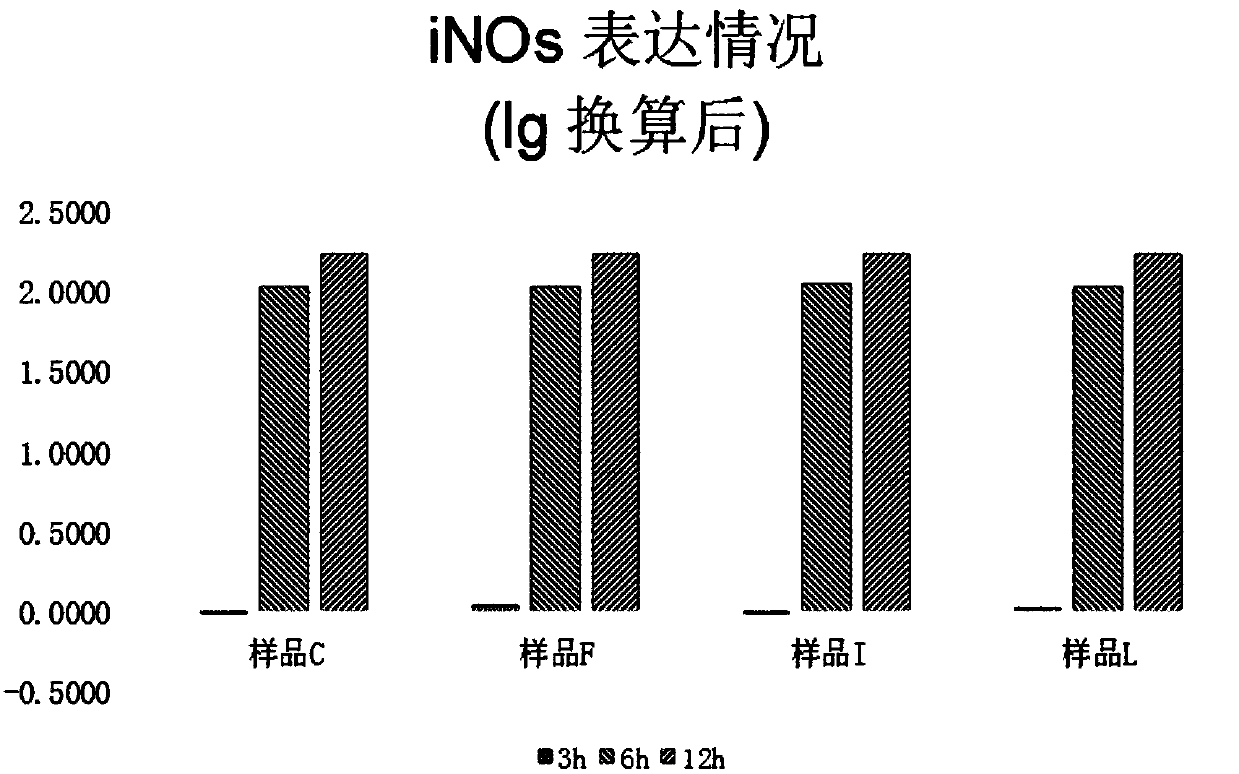Applications of Bacteroides fragilis in preparation of inducer for inducing polarization of macrophages into M1 macrophages
A technology of Bacteroides fragilis and macrophages, applied in the application field of Bacteroides fragilis
- Summary
- Abstract
- Description
- Claims
- Application Information
AI Technical Summary
Problems solved by technology
Method used
Image
Examples
Embodiment 1
[0035] Example 1 Isolation of Bacteroides fragilis and preparation of samples
[0036] (1) Enrichment culture of Bacteroides fragilis and preparation of live bacteria solution
[0037] Streak inoculation of strains on blood plate, 37 ℃, anaerobic culture for 48h. Observe the colony morphological characteristics, staining characteristics, size, club shape and distribution, etc.
[0038] Colony characteristics: Bacteroides fragilis ZY-312, after being cultured on a blood plate for 48 hours, is slightly convex, translucent, white, smooth, non-hemolytic, and the diameter of the colony is between 1-3mm. See figure 1 .
[0039] Morphology under the microscope: Bacteroides fragilis ZY-312 was examined by Gram staining. It is a Gram-negative bacterium with a typical rod shape, blunt rounded ends and dense staining. The uncolored part in the middle of the bacteria is like a vacuole. figure 2 .
[0040] Select a single colony and inoculate it in the improved tryptone broth for enri...
Embodiment 2
[0050] Effect of Example 2 Sample on Macrophage Polarization
[0051] The live Bacteroides fragilis solution, inactivated bacteria solution, lysate solution and culture supernatant prepared in Example 1 were used for experiments respectively. In this example, fluorescent quantitative real-time PCR is used to detect 6 factors, the 6 factors are M1 macrophage-related factors iNOs, IL-1β, TNF-α and IL-12, and M2 macrophage-related factors Factors Arg-1, IL-10. At the same time, the internal reference is set, and the internal reference is GAPDH. The 6 factors and internal reference were detected by fluorescent quantitative real-time PCR to determine the phenotype of macrophages. The specific experimental steps are as follows:
[0052] 1. Design primers
[0053] Primers were designed for the above seven factors and internal references. The details are shown in Table 2:
[0054] Table 2 Related factor primers and internal reference primers
[0055]
[0056]
[0057] 2. ...
Embodiment 3
[0106] Example 3 Effects of Different Infection Time on Macrophage Polarization
[0107] In order to detect the influence of different infection times of the above samples on the polarization of macrophages, this example uses the live Bacteroides fragilis liquid sample C, the culture supernatant sample F, the inactivated bacterial liquid sample I and the lysate prepared in Example 1 Solution samples L were tested separately. Referring to the method of Example 2, take a 24-well plate covered with BMDM in good condition, discard the cell culture supernatant, and add the above four samples according to grouping, 1 mL per well, and place at 37 ° C, 5% CO 2 Incubate in the incubator for 3, 6, and 12 hours, respectively.
[0108] Using the operation method of Example 2, the M1-type macrophage-related factors iNOs, IL-1β, TNF-α and IL-12, and the M2-type macrophage-related factors Arg-1 and IL-10 were detected respectively. The specific results are shown in Tables 11-12 and Figur...
PUM
| Property | Measurement | Unit |
|---|---|---|
| Diameter | aaaaa | aaaaa |
Abstract
Description
Claims
Application Information
 Login to View More
Login to View More - R&D
- Intellectual Property
- Life Sciences
- Materials
- Tech Scout
- Unparalleled Data Quality
- Higher Quality Content
- 60% Fewer Hallucinations
Browse by: Latest US Patents, China's latest patents, Technical Efficacy Thesaurus, Application Domain, Technology Topic, Popular Technical Reports.
© 2025 PatSnap. All rights reserved.Legal|Privacy policy|Modern Slavery Act Transparency Statement|Sitemap|About US| Contact US: help@patsnap.com



